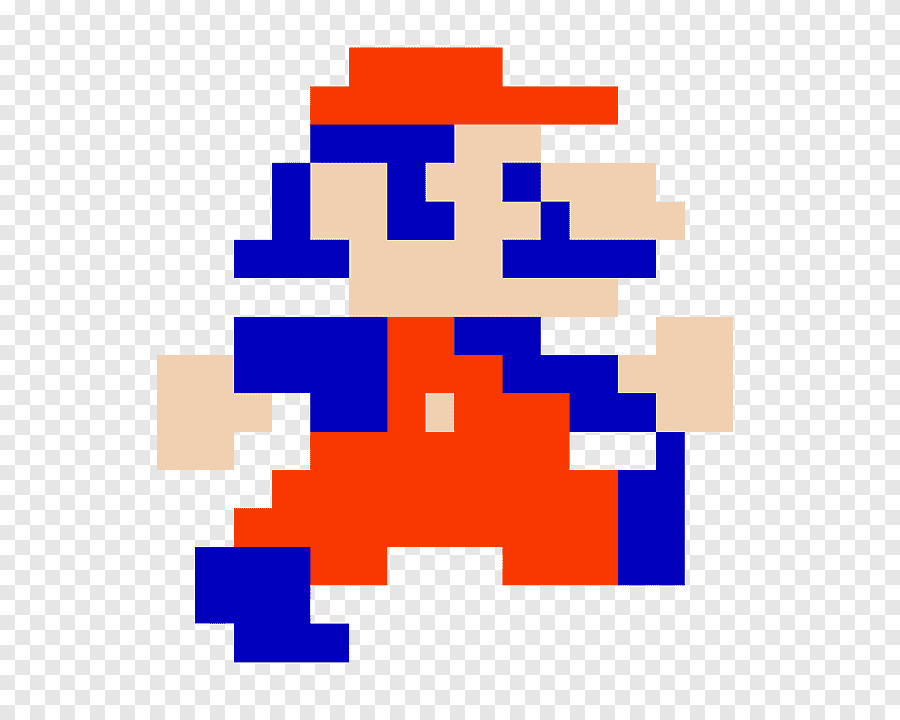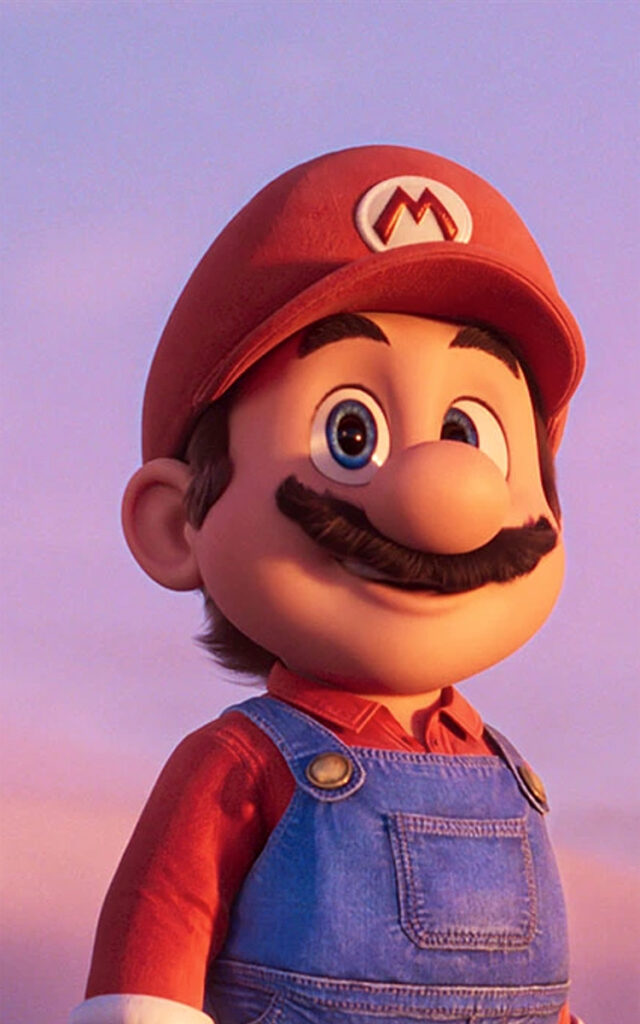Mario Through the Years: A Look at Gaming’s Most Iconic Hero
Every year on March 10, fans around the world celebrate Mario Day (Mar10)—a tribute to the most iconic video game character of all time. Since his debut in 1981, Mario has evolved from a pixelated plumber into a cultural phenomenon spanning video games, television, film, and merchandise. Let’s take a look back at how Mario has grown over the years, the voices that brought him to life, and his impact beyond gaming.
1. The Birth of Mario (1981-1985)

Before he was Mario, he was Jumpman — a carpenter tasked with rescuing a damsel in distress from a giant ape in Donkey Kong (1981). Created by Shigeru Miyamoto, this arcade game introduced a character who would soon become Nintendo’s mascot.
By 1983, Jumpman officially became Mario, named after Mario Segale, a landlord of Nintendo’s American headquarters. That same year, Mario Bros. hit arcades, introducing Mario’s brother, Luigi, and their new identity as plumbers battling creatures in underground pipes.
In 1985, Super Mario Bros. changed everything. Released on the Nintendo Entertainment System (NES), the game set the foundation for platformers and became one of the most influential video games ever. With its tight controls, colorful worlds, and catchy music, Mario had officially cemented himself as a household name.
2. The Evolution of Mario Games (1986-Present)
Following the success of Super Mario Bros., Nintendo continued to refine and expand the Mario franchise:
- 1988-1991: NES & SNES Dominance
- Super Mario Bros. 3 (1988) introduced the Tanooki Suit and Koopalings.
- Super Mario World (1990) on the Super Nintendo (SNES) brought us Yoshi and larger, more complex levels.
- 1996: The Leap to 3D with Super Mario 64
- The Nintendo 64 (N64) took Mario into 3D with Super Mario 64, redefining movement in platforming games.
- 2002-2017: Expanding the Universe
- Super Mario Sunshine (2002) introduced FLUDD, a water-powered jetpack.
- Super Mario Galaxy (2007) took Mario into space with gravity-based platforming.
- Super Mario Odyssey (2017) brought open-world exploration, the Cappy mechanic, and a return to 3D adventure gaming.
- 2023-Present: A New Era
- Super Mario Bros. Wonder (2023) introduced talking flowers, Elephant Mario, and a fresh 2D adventure.
- With the Nintendo Switch 2 rumored, fans eagerly await Mario’s next big leap.
3. The Voices Behind Mario
For many fans, the voice of Mario is just as important as the character himself.
- Early Sound Effects (1985-1995)
- In the first few Mario games, Mario had no actual voice, only jumping sounds and power-up chimes.
- Charles Martinet: The Iconic Voice (1996-2023)
- Super Mario 64 (1996) introduced Charles Martinet, who gave Mario his high-pitched, enthusiastic voice with catchphrases like:
- “It’s-a me, Mario!”
- “Wahoo!”
- “Let’s-a go!”
- Martinet voiced Mario for nearly 30 years until retiring in 2023.
- Super Mario 64 (1996) introduced Charles Martinet, who gave Mario his high-pitched, enthusiastic voice with catchphrases like:
- Kevin Afghani: The New Voice (2023-Present)
- With Super Mario Bros. Wonder, Kevin Afghani took over as the new voice of Mario, continuing the legacy while adding his own touch.
4. Mario on the Big and Small Screen
Mario’s influence isn’t limited to video games—he has made multiple appearances in television and film over the years.
Television Shows
- The Super Mario Bros. Super Show! (1989) – A mix of live-action and animated episodes starring Captain Lou Albano as Mario.
- The Adventures of Super Mario Bros. 3 (1990) and Super Mario World (1991) – Fully animated series expanding Mario’s world.
Live-Action Movie (1993)
- Super Mario Bros. (1993) starred Bob Hoskins as Mario and John Leguizamo as Luigi. While it flopped at the box office, it became a cult classic for its bizarre cyberpunk aesthetic.
Animated Movie (2023)
- The Super Mario Bros. Movie (2023) brought Mario back to the big screen in animated form, voiced by Chris Pratt. Despite initial controversy over casting, the film became one of the highest-grossing animated movies of all time.
5. Mario’s Cultural Impact
Beyond gaming, Mario has become a global icon in pop culture.
- Merchandising Powerhouse
- Mario-themed toys, clothing, and collectibles are in high demand.
- Mario Lego sets and board games like Monopoly: Super Mario Edition keep the character relevant beyond video games.
- Spin-Off Games
- Mario Kart (1992-present) remains one of the most successful racing game franchises.
- Super Smash Bros. made Mario a fighter, facing off against characters like Link, Pikachu, and Sonic.
- Mario Party turned him into a board game host, perfect for multiplayer fun.
- Super Nintendo World
- Nintendo has brought Mario to life in theme parks in Japan, California, and soon in Florida, allowing fans to step into the Mushroom Kingdom.
- Mario as an Ambassador of Gaming
- He has starred in everything from Olympic crossover games with Sonic to educational software (Mario Teaches Typing).
- His recognizability rivals Mickey Mouse, proving his timeless appeal.
6. The Future of Mario
With over 40 years of history, Mario isn’t slowing down.
- More Games Incoming?
- Rumors suggest a new 3D Mario game is in the works for the next Nintendo console.
- Possible Mario Movie Sequel
- Given the success of The Super Mario Bros. Movie, a sequel or spin-offs (maybe a Luigi’s Mansion film?) could be in development.
- Mario’s Legacy Lives On
- Whether as a side-scrolling hero, a kart-racing champion, or a Hollywood star, Mario remains gaming’s most beloved mascot.
Mario’s Legacy: More Than Just a Game

Mario’s simple yet timeless design, family-friendly appeal, and constant reinvention have made him a cultural touchstone for generations. From arcades to 4K consoles, animated series to blockbuster films, he continues to evolve while staying true to his roots.
This March 10, whether you play Super Mario Bros. on an NES Classic, race in Mario Kart 8 Deluxe, or watch The Super Mario Bros. Movie, take a moment to appreciate the legacy of gaming’s greatest hero.
Happy Mario Day!
Follow On Air with Johnny B
John Bowman is a journalist, podcast host, and digital media strategist with a passion for storytelling that informs and inspires. As the host of On Air with Johnny B. and founder of Mil-Spec Digital, he explores the crossroads of entertainment, media, and veteran affairs. With a background in military intelligence and journalism, John is committed to amplifying voices, uncovering untold stories, and delivering content that matters.
